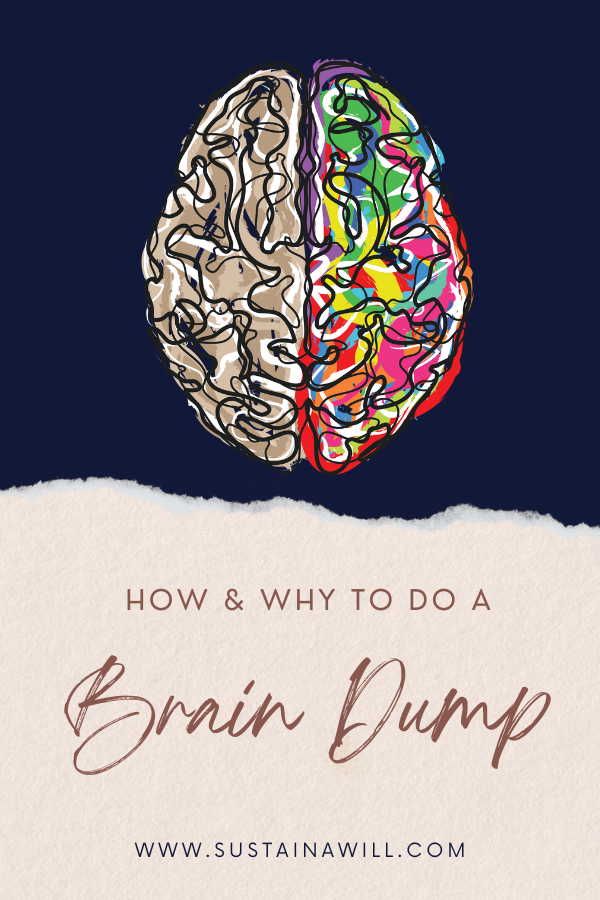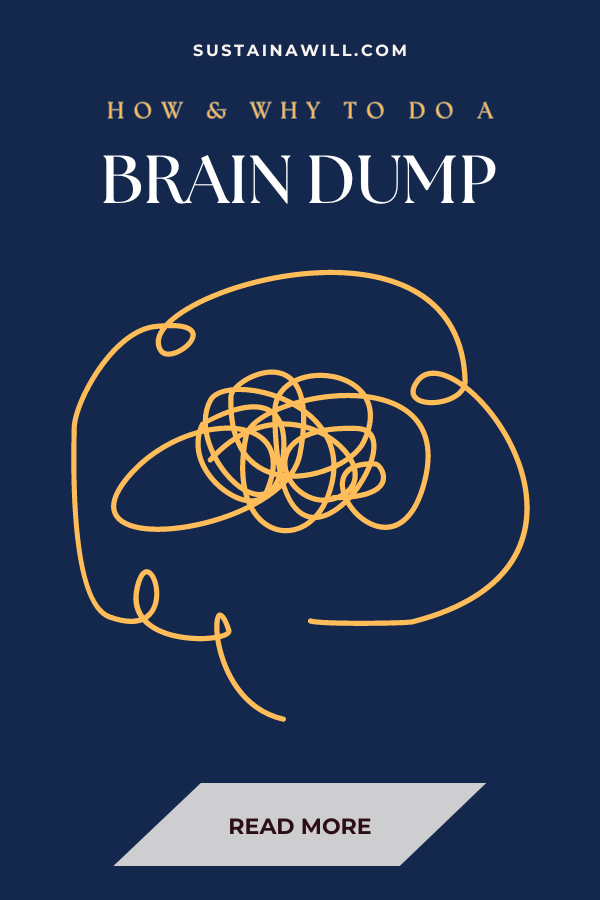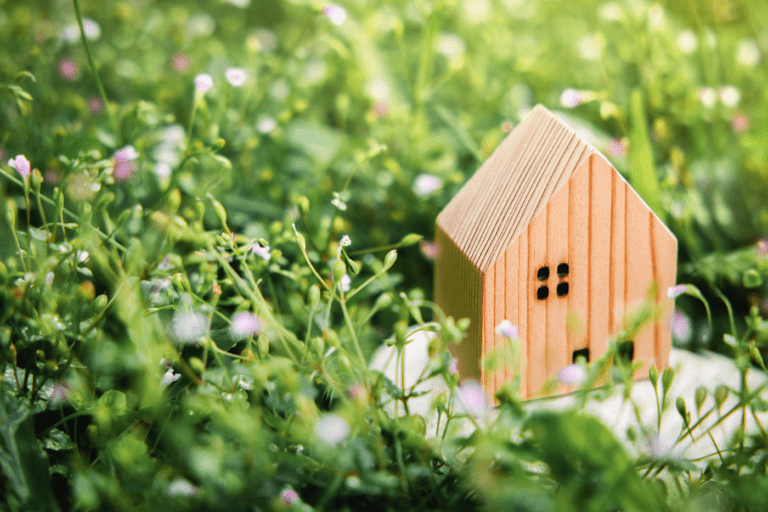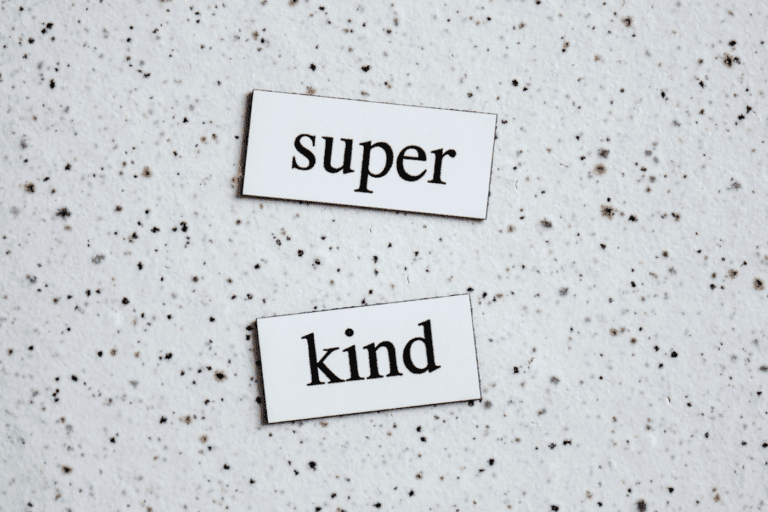Do you often find yourself overwhelmed by a gazillion thoughts racing through your head? Well, you’re not alone. In today’s fast-paced world, it’s easy to get bogged down by endless to-do lists, worries, and ideas swirling around in our minds.
But this torture will end today! I’m here to introduce you to a game-changing technique that can help you declutter your mind and regain clarity: the brain dump.
In this post, we’ll dive into the art of brain dumping, exploring what it is, why it’s so beneficial, and how it can transform the way you approach your daily life.
What is a Brain Dump?
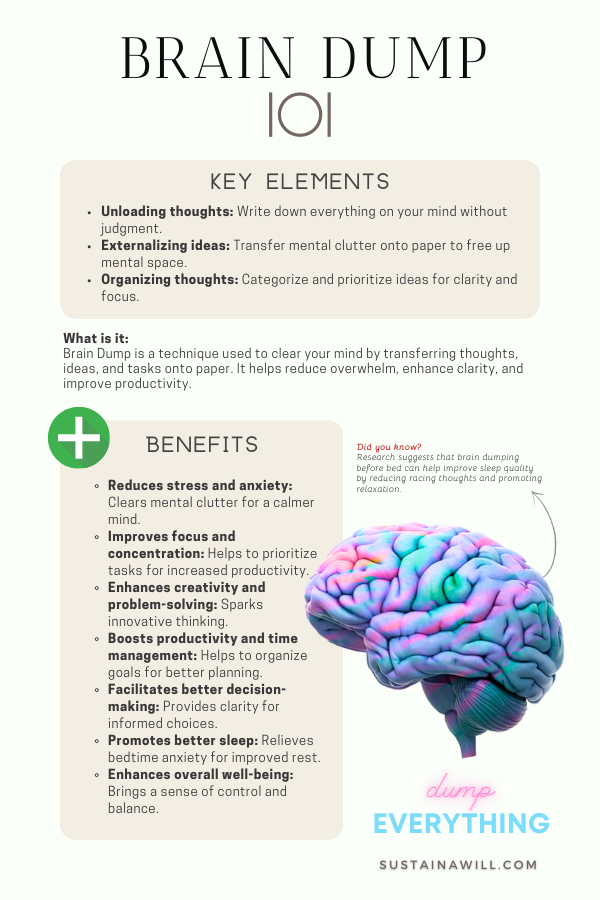
A brain dump is a technique used to declutter and organize your thoughts by transferring them from your mind onto paper or digital format.
Think of a brain dump as a mental spring cleaning session. It’s all about taking those jumbled thoughts, worries, and ideas swirling around in your head and getting them down on paper or on your computer.
The key is to write down everything that comes to mind without filtering or editing, allowing you to clear mental space and gain clarity.
What is a Brain Dump Journal?
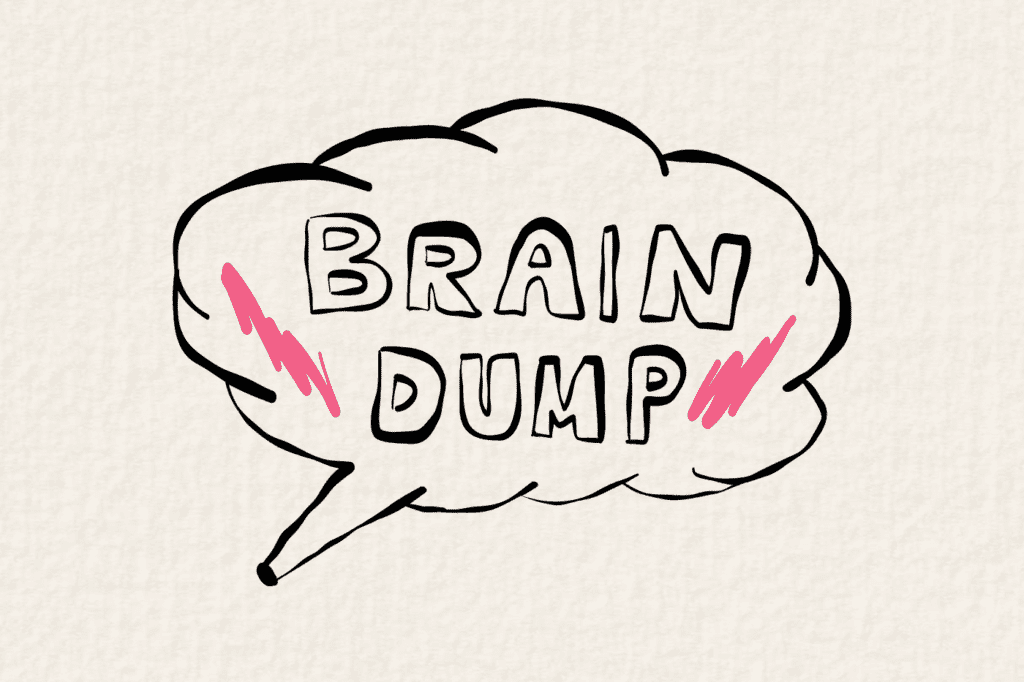
A brain dump journal is a dedicated notebook or digital document where you can where you can dump all those thoughts.
It serves as a safe space to write down your thoughts, ideas, tasks, worries, and anything else weighing on your mind, helping you to unload mental clutter and organize your thoughts more effectively.
Benefits of Brain Dumping

So, why bother with a brain dump? Well, let me tell you, it’s a game-changer!
It can help you:
- increase self-awareness
- clear out the mental clutter
- make room for fresh ideas and clearer thinking
- improve focus and concentration
For example in this 2021 study, researchers found that using brain dump activities helped reduce the mental strain students experience when learning about complex topics.
Plus, it’s incredibly cathartic—there’s something so satisfying about seeing all your thoughts laid out in front of you. Trust me, once you start brain-dumping, you’ll wonder how you ever managed without it!
What does a Brain Dump look like?
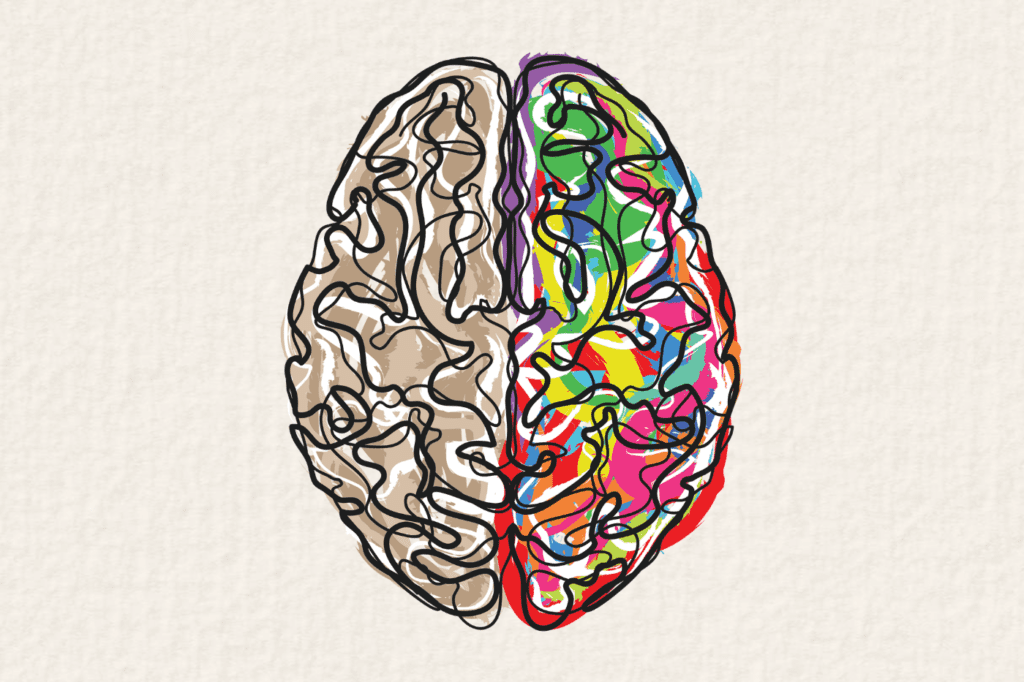
A brain dump can take various forms, depending on your preferences and the purpose behind it.
It might resemble:
- A chaotic collection of random thoughts and ideas scribbled across a page.
- Neatly organized lists of tasks, worries, goals, and inspirations.
- Mind maps or diagrams connecting related concepts and ideas.
- Bullet journal-style spreads with colorful headers and doodles.
- Digital documents filled with typed-out thoughts and notes.
8 Brain Dump Examples
To give you a better idea, here are some fun brain dump ideas to get you started:
1. Morning Mind Dump
Start your day by jotting down everything from your dreams to your goals for the day.
Consider incorporating this morning dump as an integral part of your morning routine. You’ll be surprised at the positive results this uncomplicated practice can bring to your day!
2. Work Worries Dump
Write down any work-related tasks, deadlines, or ideas that are occupying your mind.
3. Creative Chaos Dump
Let your creativity run wild by doodling, sketching, or brainstorming new project ideas.
4. Anxiety Attack Dump
Externalize your anxious thoughts by writing them down, helping to ease your mind.
5. Goal-Setting Dump
Map out your short-term and long-term goals, breaking them down into actionable steps.
6. Reflective Ramble Dump
Take a moment to reflect on your day or week, noting down highlights and areas for improvement.
7. Project Planning Dump
Brainstorm ideas and action plans for a specific project or task you’re working on.
8. Self-Care Session Dump
List out activities and practices that bring you joy and relaxation, creating your own personalized self-care plan.
Remember, there’s no right or wrong way to do a brain dump—it’s all about letting go of mental clutter and giving yourself the space to think clearly. So grab your favorite pen or fire up your laptop, and let’s start dumping those thoughts onto paper!
What should I write in a Brain Dump?
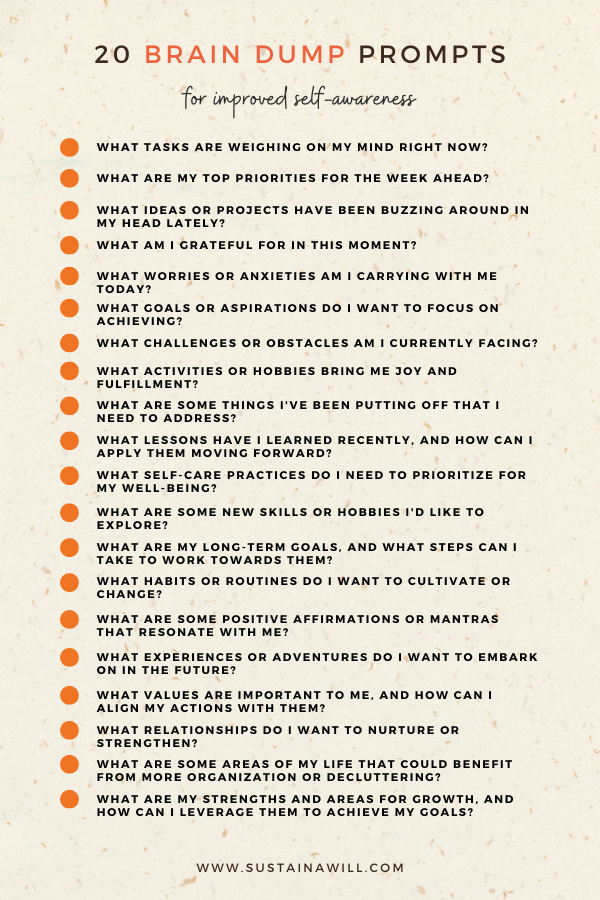
Feeling stuck on what to write in your brain dump? Don’t worry, I’ve got you covered!
Take a look at these prompts to kickstart your brainstorming session and unleash your creativity:
20 Brain Dump Prompts
- What tasks are weighing on my mind right now?
- What are my top priorities for the week ahead?
- What ideas or projects have been buzzing around in my head lately?
- What am I grateful for in this moment?
- What worries or anxieties am I carrying with me today?
- What goals or aspirations do I want to focus on achieving?
- What challenges or obstacles am I currently facing?
- What activities or hobbies bring me joy and fulfillment?
- What are some things I’ve been putting off that I need to address?
- What lessons have I learned recently, and how can I apply them moving forward?
- What self-care practices do I need to prioritize for my well-being?
- What are some new skills or hobbies I’d like to explore?
- What are my long-term goals, and what steps can I take to work towards them?
- What habits or routines do I want to cultivate or change?
- What are some positive affirmations or mantras that resonate with me?
- What experiences or adventures do I want to embark on in the future?
- What values are important to me, and how can I align my actions with them?
- What relationships do I want to nurture or strengthen?
- What are some areas of my life that could benefit from more organization or decluttering?
- What are my strengths and areas for growth, and how can I leverage them to achieve my goals?
Mindfulness FYI
If you enjoy brain dump prompts, you might also want to explore mindfulness journaling. It’s a great way to cultivate self-awareness and inner peace. Check out our blog post on powerful mindfulness journal prompts for inspiration: Powerful Mindfulness Journal Prompts
What Phase comes after the Brain Dump?
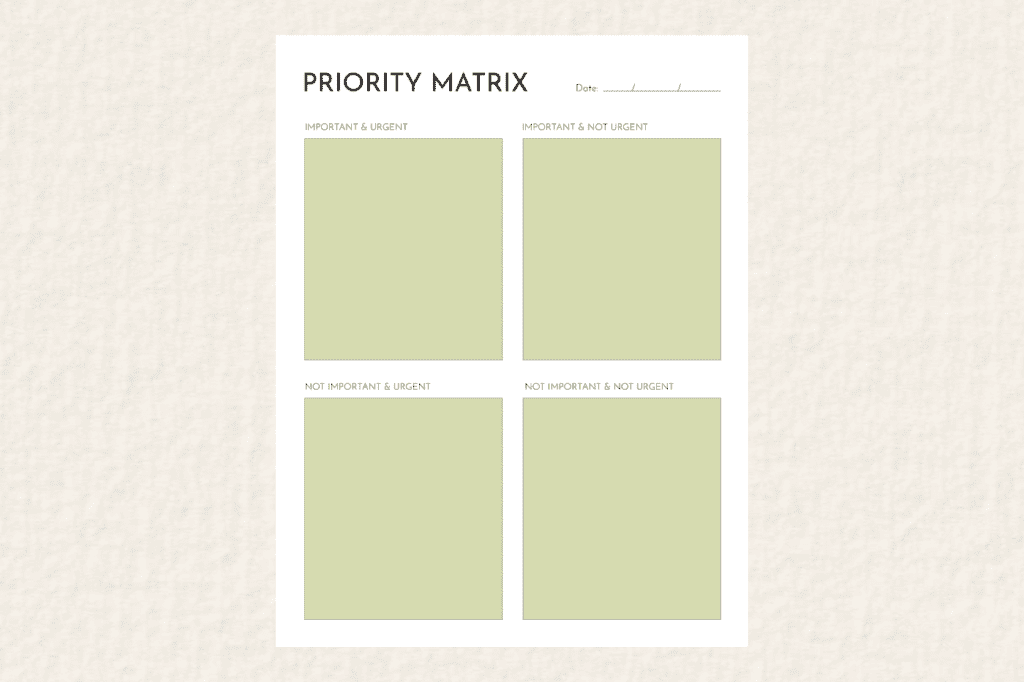
Once you’ve completed your brain dump and unleashed all those swirling thoughts onto paper, it’s time to start the next phase: making sense of it all!
It’s like organizing a messy room: you start by picking up each item, deciding where it belongs, and finding a spot for it. Similarly, after your brain dump, you’ll sort through your ideas, categorize them, and prioritize what needs attention.
- Sorting: Review your brain dump to identify common themes, tasks, or ideas.
- Categorizing: Group related items to streamline your thoughts and make them more manageable.
- Prioritizing: Determine which tasks or ideas are most important or urgent and assign them priority levels.
- Planning: Create a plan of action based on the information gathered during the brain dump, setting specific goals and deadlines.
- Taking Action: Put your plan into motion by taking on tasks one step at a time and making progress towards your goals.
- Reflecting: Periodically review your progress and adjust your plans as needed based on new developments or changing priorities.
Take it one step at a time, and don’t be afraid to get creative with your approach. Whether you’re making lists, drawing diagrams, or color-coding your thoughts, find a method that speaks to you.
FAQs
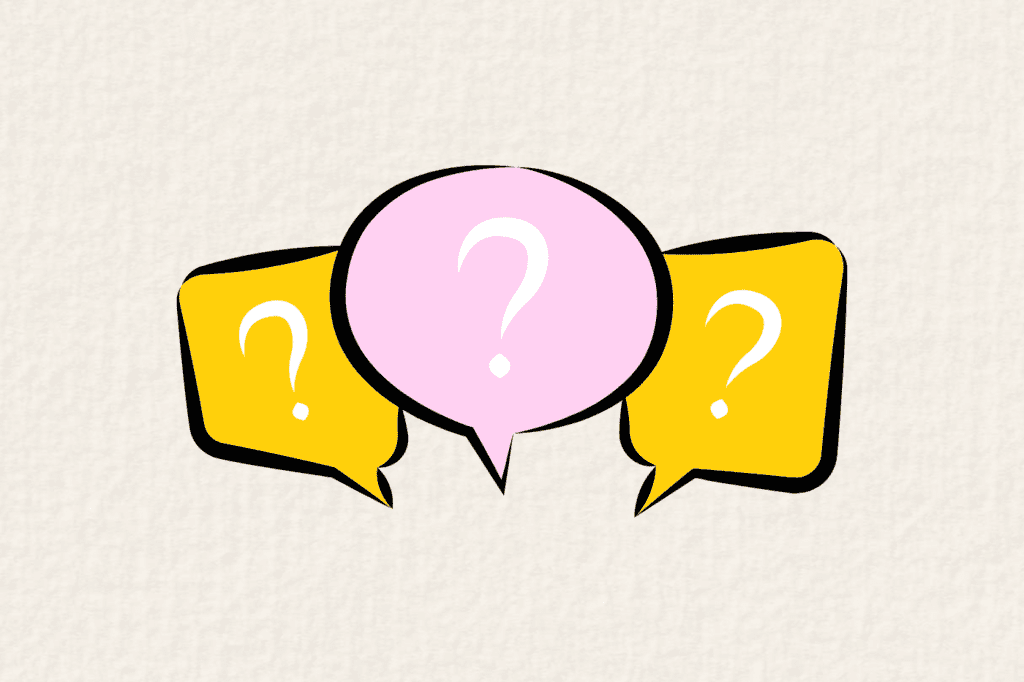
How to do a Brain Dump with ADHD?
If you have ADHD, brain dumping can be a helpful tool for organizing your thoughts and reducing overwhelm.
Here are some tips to make the process more effective:
- Set a timer: Limit your brain dump session to a specific amount of time to prevent overwhelm.
- Break it down: Divide your brain dump into smaller, more manageable chunks to focus on one task or topic at a time.
- Use visual aids: Consider using color-coding, mind maps, or other visual tools to organize your thoughts.
- Embrace flexibility: Be open to adapting your brain dump process to suit your unique needs and preferences.
How do you Brain Dump before Bed?
Brain dumping before bed can help clear your mind and promote better sleep.
Here’s how to do it effectively:
- Set the mood: Create a calming environment by dimming the lights, playing soothing music, or practicing relaxation techniques.
- Keep it simple: Focus on jotting down any lingering thoughts, worries, or tasks that are keeping you awake.
- Practice gratitude: Take a moment to reflect on the positive aspects of your day and express gratitude for them.
- Let it go: Once you’ve emptied your mind onto paper, release any remaining tension or stress, knowing that you can address those thoughts tomorrow.
- Avoid screens: Try to avoid screens or electronic devices before bed, as they can stimulate your brain and interfere with your ability to relax.
Takeaway
By incorporating this simple yet powerful technique into your daily routine, you’ll find yourself better equipped to take on challenges, make decisions with clarity, and navigate life’s twists and turns with confidence.
So, what are you waiting for? Start brain-dumping today and experience the transformative power of a clear mind. Whether you’re facing a daunting to-do list, struggling to find direction, or simply seeking a moment of peace amidst the chaos, a brain dump could be the solution you’ve been searching for.
Take a deep breath, grab a pen and paper, and let those thoughts flow freely. You’ll be amazed at how much lighter you feel once you’ve unloaded the mental clutter weighing you down.
